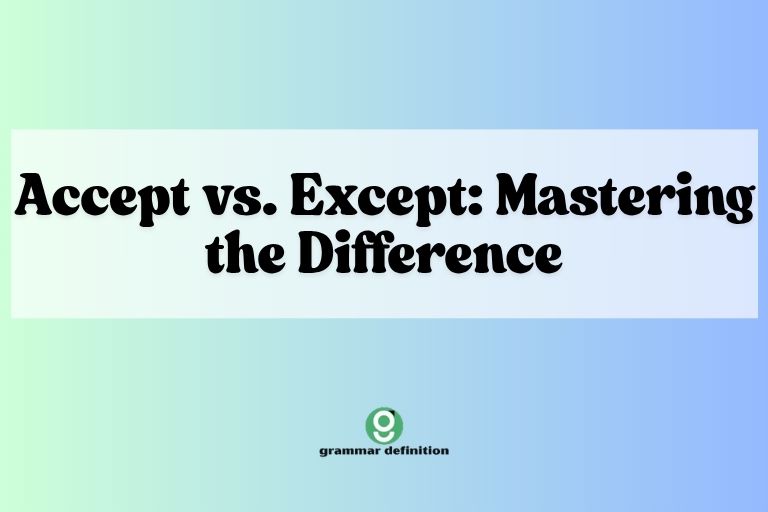What’s the Plural of Stratum? Mastering Irregular Plurals

Understanding how to form plurals is a fundamental aspect of English grammar. While many nouns follow simple rules, some, like stratum, have irregular plural forms that can be confusing. This article delves into the intricacies of the word stratum, its definition, its plural forms, and how to use them correctly. Whether you’re a student, a writer, or simply someone looking to improve their grammar, this guide will equip you with the knowledge to confidently use stratum and its plurals in any context.
This article will benefit students learning about Latin-derived plurals, writers aiming for precision in their language, and anyone interested in expanding their understanding of English grammar nuances. By exploring examples, usage rules, and common mistakes, we aim to provide a comprehensive and easily understandable explanation of this sometimes tricky grammatical concept.
Table of Contents
- Introduction
- Definition of Stratum
- Structural Breakdown
- Types of Plurals
- Examples of Stratum and Strata
- Usage Rules
- Common Mistakes
- Practice Exercises
- Advanced Topics
- FAQ
- Conclusion
Definition of Stratum
The word stratum comes from Latin and is a singular noun. It refers to a layer or a level of something, often in a series of layers. It is commonly used in various fields, including geology, archaeology, sociology, and even business.
In geology, a stratum refers to a layer of rock or soil. In archaeology, it signifies a layer of human-made deposits or soil with specific characteristics. In sociology, it can describe a level of society, often based on socioeconomic factors. Understanding the context is crucial to interpreting the meaning of stratum and its plural forms correctly.
Here’s a more detailed breakdown:
- Classification: Noun (singular)
- Function: To denote a single layer, level, or division.
- Contexts: Geology, archaeology, sociology, business, and other fields requiring layered analysis.
Structural Breakdown
The word stratum is derived from Latin, and its pluralization follows Latin rules. Unlike many English nouns that simply add an “-s” to form the plural, stratum changes its ending. The standard plural form of stratum is strata.
This change reflects a common pattern in Latin-derived nouns. The “-um” ending in Latin singular nouns often transforms into “-a” in the plural. This is a key rule to remember. Other examples of this pattern include curriculum (plural: curricula) and datum (plural: data).
Understanding this structural change helps in not only using stratum correctly but also in recognizing and correctly pluralizing other similar Latin-derived words. Knowing the root of the word provides a deeper understanding of its grammatical behavior.
Types of Plurals
While the standard plural of stratum is strata, it’s important to be aware of the different types of plurals and how they apply to this word. In general, nouns can have regular plurals (formed by adding “-s” or “-es”) or irregular plurals (which follow different rules, often based on their origin).
Regular Plurals
Regular plurals are the most common type in English. They are formed by adding “-s” to the end of the singular noun (e.g., book becomes books) or “-es” if the noun ends in -s, -x, -ch, -sh (e.g., box becomes boxes).
Irregular Plurals
Irregular plurals don’t follow the standard rules. They often have historical or linguistic origins that explain their unique forms. Some irregular plurals involve a change in the vowel sound (e.g., foot becomes feet), while others, like stratum, change the ending of the word.
Latin Plurals
Latin plurals are a subset of irregular plurals that follow the rules of Latin grammar. As mentioned earlier, many Latin-derived nouns ending in “-um” form their plural by changing the ending to “-a.” This category includes words like stratum, curriculum, and medium.
Examples of Stratum and Strata
To illustrate the use of stratum and strata, let’s examine various examples in different contexts. These examples will help clarify how to use these words correctly and confidently.
Geological Context
In geology, stratum and strata are used to describe layers of rock or soil. Here are some examples:
| Sentence | Explanation |
|---|---|
| The geologist examined the stratum of sedimentary rock. | Here, stratum refers to a single layer of sedimentary rock. |
| The strata of the Grand Canyon reveal millions of years of geological history. | Strata refers to multiple layers of rock, each representing a different period. |
| Each stratum contained unique fossil evidence. | Stratum indicates a single layer with fossil evidence. |
| The earthquake shifted the strata, causing significant damage. | Strata describes the multiple layers that were affected by the earthquake. |
| The deepest stratum was the most difficult to excavate. | Stratum refers to the single, deepest layer being excavated. |
| Scientists analyzed the composition of each strata to determine its age. | Strata refers to multiple layers whose composition was analyzed. |
| The study focused on a single stratum of volcanic ash. | Stratum refers to one specific layer of volcanic ash. |
| The strata showed clear evidence of past volcanic activity. | Strata refers to multiple layers showing evidence. |
| A thin stratum of clay separated the two rock formations. | Stratum refers to a single, thin layer of clay. |
| The strata were tilted at a steep angle due to tectonic forces. | Strata refers to multiple layers tilted by tectonic forces. |
| The paleontologist carefully brushed away the soil from the stratum containing the dinosaur bones. | Stratum refers to the single layer where the bones were found. |
| Examining the different strata provided insights into the changing environment over time. | Strata refers to multiple layers that reveal environmental changes. |
| The stratum was rich in mineral deposits. | Stratum refers to a single layer rich in minerals. |
| The strata varied in color and texture. | Strata refers to multiple layers with different colors and textures. |
| The researchers identified a distinct stratum that marked the boundary between two geological periods. | Stratum refers to a single layer marking a boundary. |
| The analysis of the strata helped to reconstruct the geological history of the region. | Strata refers to multiple layers used to understand geological history. |
| The stratum was compressed under immense pressure. | Stratum refers to a single layer under pressure. |
| The strata revealed a complex sequence of deposition and erosion. | Strata refers to multiple layers showing deposition and erosion. |
| A prominent stratum of sandstone was visible from the hiking trail. | Stratum refers to a single, visible layer of sandstone. |
| The study of the strata provided a comprehensive understanding of the area’s geological past. | Strata refers to multiple layers that help understand the past. |
Archaeological Context
In archaeology, stratum and strata refer to layers of soil or deposits that contain artifacts or other evidence of past human activity.
| Sentence | Explanation |
|---|---|
| The archaeologist carefully excavated each stratum to uncover artifacts. | Stratum refers to a single layer being excavated. |
| The strata revealed different periods of occupation at the site. | Strata refers to multiple layers, each representing a different period. |
| Within each stratum, different types of pottery shards were found. | Stratum refers to single layer, having pottery shards. |
| The strata were meticulously analyzed to determine the chronology of the settlement. | Strata refers to multiple layers being analyzed chronologically. |
| A single stratum contained evidence of a major fire. | Stratum refers to one layer showing evidence of a fire. |
| The team carefully documented each strata to preserve the context of the findings. | Strata refers to multiple layers being documented. |
| The uppermost stratum had been disturbed by recent construction. | Stratum refers to the single, uppermost layer. |
| The strata provided a detailed record of the site’s history. | Strata refers to multiple layers recording historical details. |
| A distinct stratum marked the transition between the Bronze Age and the Iron Age. | Stratum refers to a single layer marking a transition. |
| The strata showed evidence of successive building phases. | Strata refers to multiple layers showing building phases. |
| The archaeologist carefully sifted through the stratum, looking for small artifacts. | Stratum refers to one layer being sifted through. |
| The analysis of the strata revealed patterns of settlement and abandonment. | Strata refers to multiple layers revealing settlement patterns. |
| A rich stratum of organic material was found near the ancient hearth. | Stratum refers to a single, rich layer. |
| The strata contained a variety of tools, pottery, and other artifacts. | Strata refers to multiple layers containing artifacts. |
| The researchers focused on a specific stratum to understand the daily life of the inhabitants. | Stratum refers to one layer being focused on. |
| The study of the strata provided insights into the social and economic organization of the community. | Strata refers to multiple layers revealing social and economic details. |
| The stratum was dated using radiocarbon analysis. | Stratum refers to a single layer being dated. |
| The strata were carefully mapped and recorded. | Strata refers to multiple layers being mapped. |
| A significant stratum of ash indicated a major volcanic eruption in the region. | Stratum refers to one layer indicating an eruption. |
| The examination of the strata offered a comprehensive view of the site’s past. | Strata refers to multiple layers offering a comprehensive view. |
Sociological Context
In sociology, stratum and strata can refer to different levels or classes within a society.
| Sentence | Explanation |
|---|---|
| Each stratum of society has its own unique culture and values. | Stratum refers to a single level of society. |
| The strata of socioeconomic classes are becoming increasingly divided. | Strata refers to multiple levels of socioeconomic classes. |
| The upper stratum enjoys significant economic advantages. | Stratum refers to the single, upper level. |
| The strata of the population have different access to healthcare. | Strata refers to multiple levels of the population. |
| A particular stratum of society faces unique challenges. | Stratum refers to a single level facing challenges. |
| The study examined the different strata within the workforce. | Strata refers to multiple levels within the workforce. |
| The lowest stratum often struggles with poverty and lack of opportunity. | Stratum refers to the single, lowest level. |
| The strata of society are interconnected and interdependent. | Strata refers to multiple levels that are interconnected. |
| A specific stratum is more likely to vote in local elections. | Stratum refers to a single level more likely to vote. |
| The strata of the community vary in their educational attainment. | Strata refers to multiple levels varying in education. |
| The researcher focused on a stratum of middle-class families. | Stratum refers to a single level of families. |
| The analysis of the strata revealed disparities in income and wealth. | Strata refers to multiple levels revealing disparities. |
| The middle stratum is often referred to as the backbone of society. | Stratum refers to the single, middle level. |
| The strata have different levels of political influence. | Strata refers to multiple levels of influence. |
| The team investigated a stratum of immigrant workers. | Stratum refers to a single level of workers. |
| The study of the strata provided insights into the social mobility of the population. | Strata refers to multiple levels revealing social mobility. |
| The upper stratum has a higher life expectancy. | Stratum refers to the single, upper level. |
| The strata are often defined by their occupation and income levels. | Strata refers to multiple levels defined by occupation. |
| A large stratum of the population is employed in the service industry. | Stratum refers to a single, large level. |
| The examination of the strata offered a detailed understanding of social inequality. | Strata refers to multiple levels offering an understanding of inequality. |
Usage Rules
Using stratum and strata correctly involves understanding their singular and plural forms, as well as the context in which they are used. Here are some key rules to keep in mind:
- Singular vs. Plural: Use stratum when referring to a single layer or level. Use strata when referring to multiple layers or levels.
- Context Matters: The specific meaning of stratum and strata depends on the context (geology, archaeology, sociology, etc.).
- Formal Writing: In formal writing, it’s generally preferred to use the Latin plural strata.
- Consistency: Maintain consistency in your writing. If you start using strata, continue to use it throughout the text when referring to multiple layers.
It is crucial to understand the specific context in which you are using these words to ensure accuracy. For instance, referring to geological layers versus social levels requires different considerations.
Common Mistakes
One of the most common mistakes is using stratum as a plural or using strata as a singular. Here are some examples of common errors and their corrections:
| Incorrect | Correct | Explanation |
|---|---|---|
| The geologist studied the strata of rock. | The geologist studied the strata of rock. | Strata is already plural; no need to add an “s.” |
| Each strata contained unique fossils. | Each stratum contained unique fossils. | Stratum is singular, so it agrees with “each.” |
| The stratum were clearly defined. | The strata were clearly defined. | Strata is plural and requires a plural verb (“were”). |
| A thick strata of clay was found. | A thick stratum of clay was found. | Use singular form stratum with the article “a.” |
| The different stratum revealed new insights. | The different strata revealed new insights. | The adjective “different” implies more than one, so use the plural form. |
| The stratum is easily identifiable. | The stratum is easily identifiable. | Correct as is. Stratum is already singular and agrees with “is”. |
| The strata is easily identifiable. | The strata are easily identifiable. | Strata is plural and must agree with the verb “are”. |
| We analyzed the stratum. | We analyzed the stratum. | Correct as is. Stratum is singular. |
| We analyzed the strata. | We analyzed the strata. | Correct as is. Strata is plural. |
| The stratum shows the way. | The stratum shows the way. | Correct as is. Singular form is correctly used. |
Practice Exercises
Test your understanding of stratum and strata with these practice exercises. Fill in the blanks with the correct form of the word.
Exercise 1: Singular or Plural
Choose the correct form (stratum or strata) to complete each sentence.
| Question | Answer |
|---|---|
| 1. The geologist examined each _______ carefully. | stratum |
| 2. The _______ of the Earth reveal its history. | strata |
| 3. A single _______ contained evidence of early human activity. | stratum |
| 4. The _______ were formed over millions of years. | strata |
| 5. Each _______ in the archaeological dig was meticulously documented. | stratum |
| 6. The different _______ of society have varying access to resources. | strata |
| 7. The uppermost _______ was disturbed by recent construction. | stratum |
| 8. The _______ provided a detailed record of the site’s history. | strata |
| 9. A distinct _______ marked the transition between two geological periods. | stratum |
| 10. The _______ showed evidence of successive building phases. | strata |
Exercise 2: Sentence Completion
Complete each sentence with either “stratum” or “strata” to make it grammatically correct.
| Question | Answer |
|---|---|
| 1. The researcher focused on one particular _______ of the population. | stratum |
| 2. The _______ of rock were clearly visible in the canyon walls. | strata |
| 3. Each _______ of soil was carefully analyzed for its composition. | stratum |
| 4. The _______ in the archaeological site revealed different periods of occupation. | strata |
| 5. The sociologist studied the different levels, or _______, of society. | strata |
| 6. This _______ contains the oldest fossils found at the dig site. | stratum |
| 7. The _______ of the area are composed of sandstone and limestone. | strata |
| 8. Each _______ of the culture was unique in its own way. | stratum |
| 9. The _______ were undisturbed during the archaeological dig. | strata |
| 10. The geologist analyzed one specific _______ of shale. | stratum |
Exercise 3: Error Correction
Identify and correct the errors in the following sentences related to the use of “stratum” and “strata.”
| Question | Answer |
|---|---|
| 1. The geologist studied the strata of rock. | The geologist studied the strata of rock. |
| 2. Each strata contained unique fossils. | Each stratum contained unique fossils. |
| 3. The stratum were clearly defined. | The strata were clearly defined. |
| 4. A thick strata of clay was found. | A thick stratum of clay was found. |
| 5. The different stratum revealed new insights. | The different strata revealed new insights. |
| 6. The stratum is easily identifiable. | The stratum is easily identifiable. |
| 7. The strata is easily identifiable. | The strata are easily identifiable. |
| 8. We analyzed the stratum. | We analyzed the stratum. |
| 9. We analyzed the strata. | We analyzed the strata. |
| 10. The stratum shows the way. | The stratum shows the way. |
Advanced Topics
For advanced learners, it’s important to understand more nuanced aspects of using Latin plurals like strata. This includes recognizing the subtle differences in meaning that can arise depending on the context and understanding the ongoing evolution of language. While strata is the standard plural, there may be instances where the regular English pluralization (adding “-s”) is acceptable, particularly in less formal contexts. However, using stratums is generally discouraged in academic or formal writing.
Additionally, exploring the etymology of stratum and its connection to other Latin-derived words can provide a deeper understanding of its grammatical behavior. Understanding how language evolves and adapts can also help in appreciating the nuances and potential variations in usage.
FAQ
Here are some frequently asked questions about the plural of stratum:
- Is “stratums” an acceptable plural form?
While technically possible, “stratums” is generally not accepted in formal or academic writing. The preferred plural form is strata due to its Latin origin.
- Why does stratum have an irregular plural?
Stratum is a Latin-derived word, and its pluralization follows Latin grammar rules. In Latin, nouns ending in “-um” often form their plural by changing the ending to “-a.”
- Can I use strata as a singular noun?
No, strata is strictly a plural noun. The singular form is stratum.
- Is it important to use the correct plural form in all contexts?
In formal writing and academic contexts, using the correct plural form (strata) is essential for maintaining credibility and clarity. In informal settings, the occasional use of “stratums” might be understood, but it’s still best to use strata for accuracy.
- Are there other words that follow the same pluralization rule as stratum?
Yes, many Latin-derived words ending in “-um” follow the same rule. Examples include curriculum (plural: curricula), datum (plural: data), and medium (plural: media).
- How can I remember the plural form of stratum?
One helpful tip is to associate stratum with other similar Latin words you already know. Remembering the “-um” to “-a” rule can also be beneficial.
- Does the meaning of stratum change depending on the field it’s used in?
Yes, the specific meaning of stratum can vary depending on the field. In geology, it refers to layers of rock or soil. In archaeology, it refers to layers of human-made deposits. In sociology, it refers to levels of society. Always consider the context to understand the intended meaning.
- What is the origin of the word “stratum”?
The word “stratum” originates from Latin. It literally means “something spread out” or “a covering.”
Conclusion
Mastering the plural form of stratum is a valuable step in improving your English grammar skills. Understanding the rules governing irregular plurals, especially those derived from Latin, can significantly enhance your writing and communication. Remember that the correct plural form is strata, and its usage should be consistent, particularly in formal contexts. By avoiding common mistakes and practicing regularly, you can confidently use stratum and strata in any situation.
Continue to explore and learn about other irregular plurals in English. Pay attention to the context in which words are used, and always strive for accuracy in your writing.
With practice and dedication, you can master even the most challenging aspects of English grammar. Remember that language is dynamic; stay curious and keep learning!






